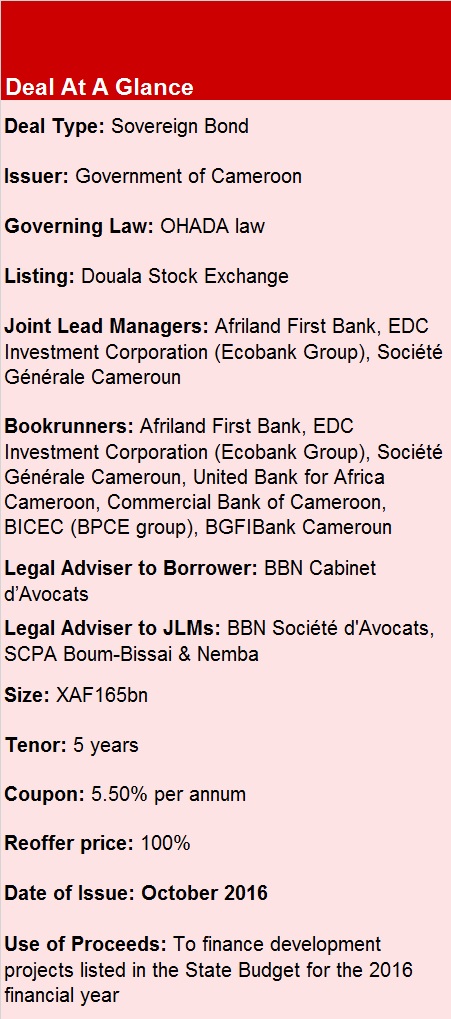
Background
The Cameroonian authorities decided to start issuing government securities instead of continuously relying on statutory advances from the regional central bank (BEAC) so as to ensure its financial system stability.
The operation was in line with the Decree N° 2016/113 of the 1 March 2016, empowering the Minister of Finance to have recourse to treasury bills and bonds worth up to XAF300bn to finance development projects included in the 2016 Finance Law.
The transaction marked the fourth local bond issued by the Republic of Cameroon since 2010.
Transaction Breakdown
The public offering was conducted by a consortium of lenders including Afriland First Bank, EDC Investment Corporation (Ecobank Group), and Société Générale Cameroun, which managed to secure partial underwriting of XAF112bn from selected bookrunners.
Although the operation was registered by the local Cameroonian Securities Exchange Commission, the bond subscription was opened to all investors (institutional and retail) in Cameroon, CEMAC, Africa and the rest of the world for a fifteen-day-period from the 27th September to the 12th October 2016.
Though the bank initially set out to raise XAF150bn (approx. US$248mn), the final book reached around XAF173bn (1.15x oversubscribed), which prompted the government to upsize the transaction to XAF165bn.
This oversubscription also speaks to the fact that the transaction was tax free and featured attractive pricing. The notes offered a 5.50% annual coupon reflecting the B2/B/B credit rating of Cameroon Sovereign debt assigned by Moody’s, Standard & Poor and Fitch, and carried a 5-year tenor with a 1-year grace period.
By type, banks constitute 63.22% of bondholders while individuals hold 10.21% of the bond. Private companies and insurance companies hold 8.08% and 7.64% of the bond, respectively. About 6.36% of the notes are held by pension funds, while 4.42% is being held by various microfinance institutions.
By geography, 93% of the bond was distributed across Cameroon, 3.83% in Congo, 2.89% in Equatorial Guinea and the remaining across Gabon, Cote d’Ivoire, Ethiopia, France, Japan and USA.









